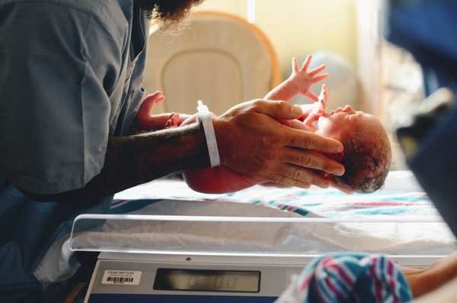Is It Dangerous to Be In Labor Too Long?
According to this NPR article the typical first-time mother gave birth in about 4 hours in the 1960s. Fast-forward over 35 years, and the average first-time mother now takes 6 ½ hours to give birth.
What Causes Prolonged Labor?
While the reasons for longer labors nowadays are not completely clear, theories include the fact that babies are bigger now than 50 years ago, and the fact that women are waiting to have children until they are older. On average, first-time mothers are about four years older than their counterparts 50 years ago. Other reasons include an increase in obesity and average body mass, and more diverse populations. However, even after adjusting for these differences, statistics still do not line up properly.
The authors of a study concluded that one of the most prevalent causes for longer labors is the increased use of epidural anesthesia, which is known to lengthen labor. With about 85% of women receiving epidurals today, they are then required to stay in bed. Women that are allowed to get up and walk around during labor have a faster labor progression. More information about prolonged second stage of labor can be found in this evidencedbasedbirth.com article.
Another reason for prolonged labor is the increase in inductions of labor, typically with the drug oxytocin, or Pitocin. A known side effect of an induction is prolonged labor.
Can Prolonged Labor Affect the Baby?
An induction of labor with oxytocin/Pitocin carries the risk of postpartum hemorrhage, uterine rupture, and maternal death to the mother, and permanent brain damage, neonatal seizures, fetal hypoxia, and fetal death to the baby.
The risks of a prolonged second stage of labor for the fetus include:
Low 5 minute Apgar scores
Umbilical artery pH < 7.0 or < 7.05
Base deficit greater than 12
Birth depression
Asphyxia
Admission to NICU
Prolonged hospital stay
Resuscitation at delivery
Seizures
Sepsis
Meconium stained amniotic fluid
Neonatal trauma
Bad neonatal outcomes including serious neonatal morbidity (seizures, HIE) and death
Fetal head trapped deep in pelvis making delivery harder/riskier
What is Considered Prolonged Labor?
For most women, a labor is considered to be prolonged if they are still in labor 18-24 hours after contractions have started. If you are a first-time mother, your labor is generally expected to take longer and you may not be declared as a prolonged labor until closer to the 24 hour mark. However, if you have had multiple children before, a "prolonged labor" may be closer to 18 hours.
Let Us Help!
If your baby has suffered an injury from labor and delivery, including from an induction with oxytocin or Pitocin, contact the attorneys at Daniel, Holoman & Associates LLP to determine whether you may have a case. There is no cost to speak with someone about your matter, and our attorneys are well-versed in of birth injury lawsuits including cases related to hypoxic ischemic encephalopathy (HIE), cerebral palsy, and other types of brain damage from labor and delivery negligence by nurses, doctors and hospitals.

